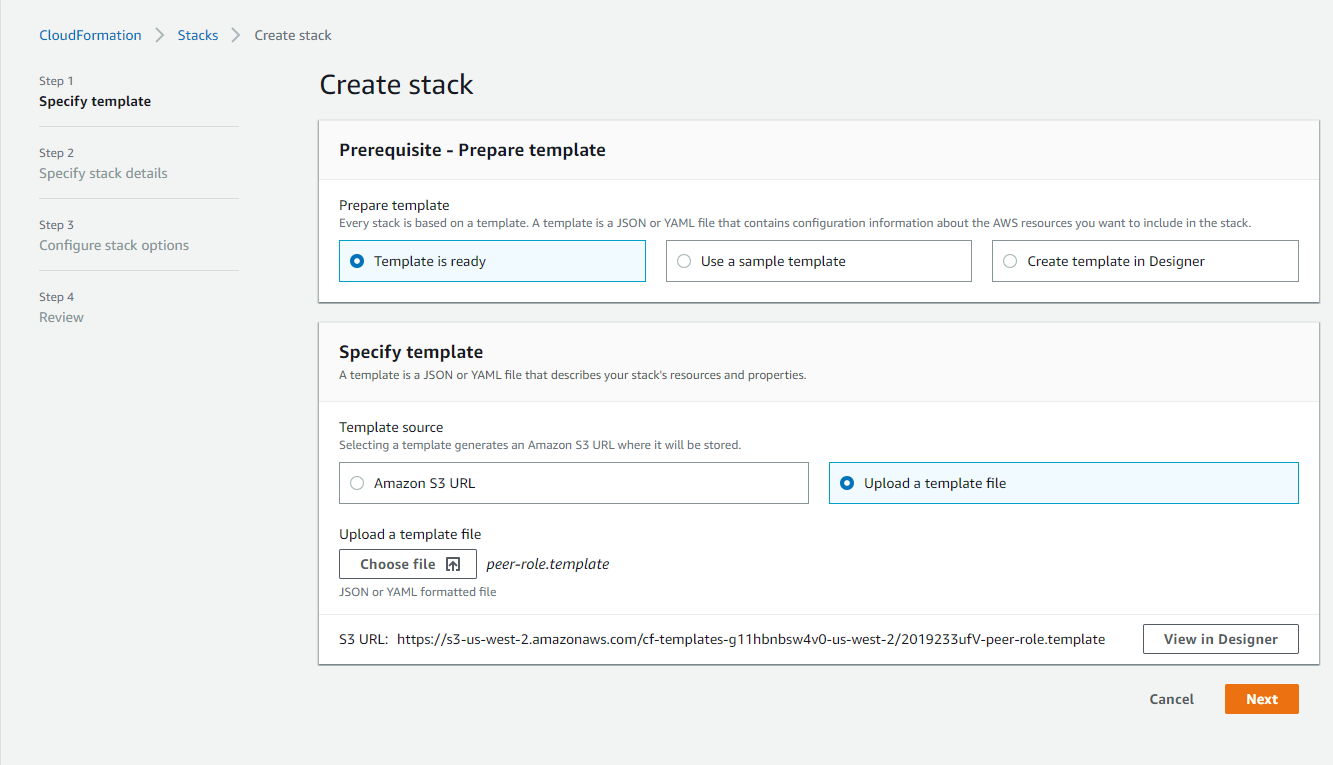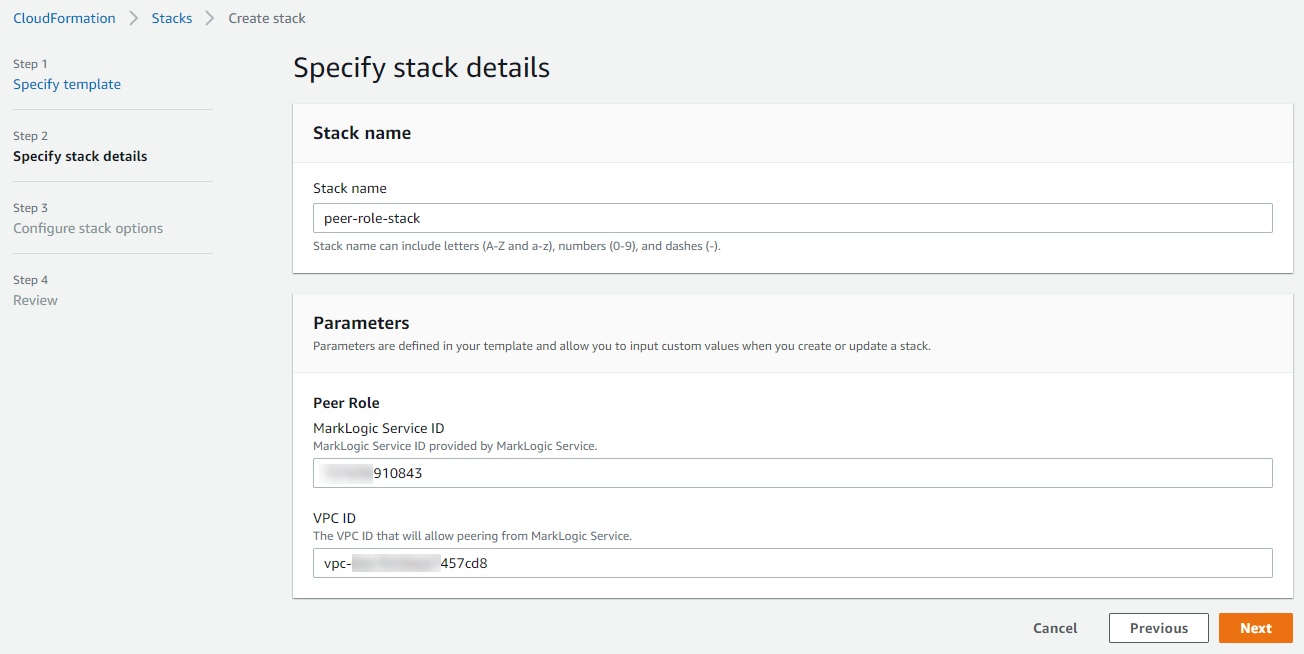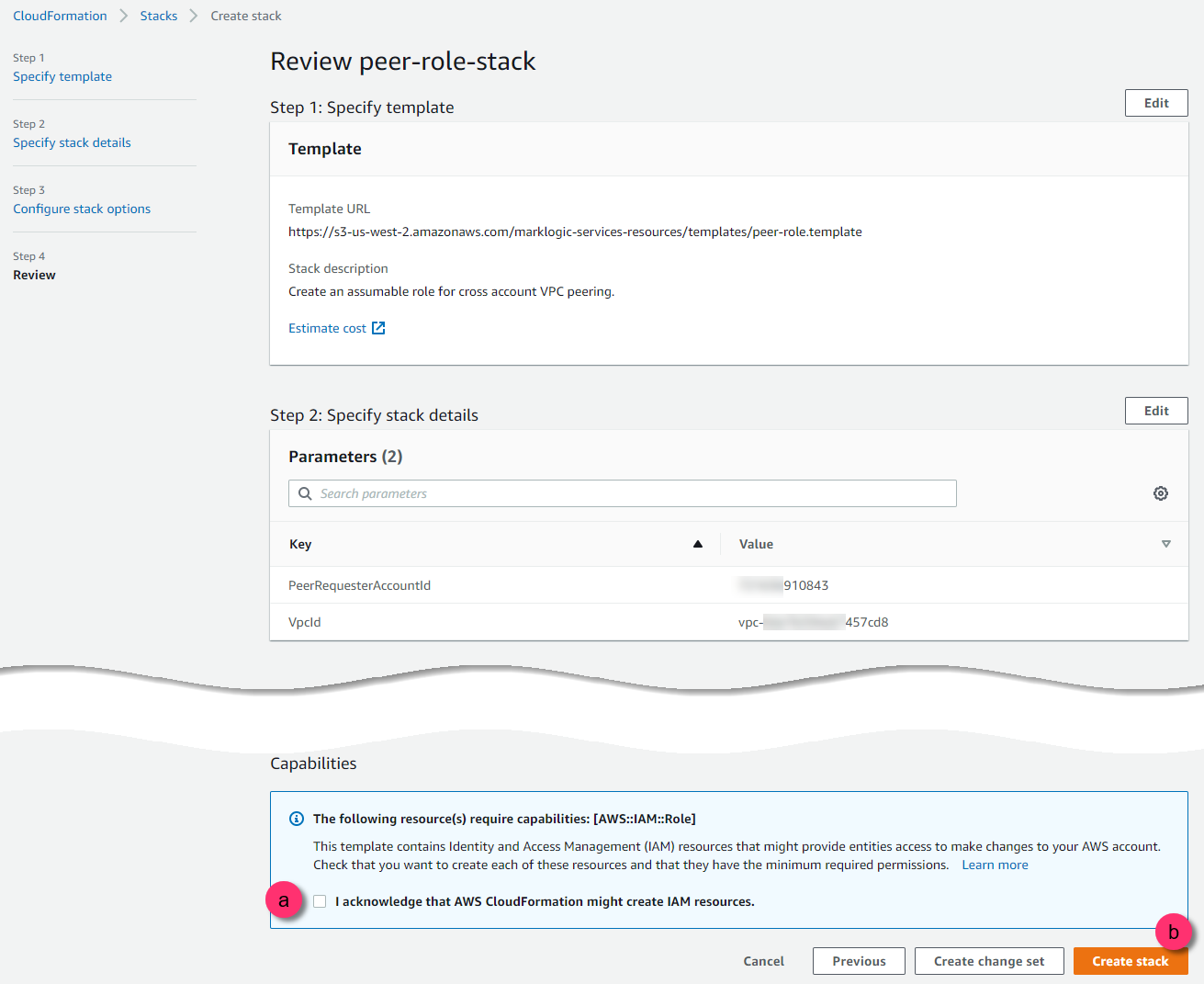Create the Peer Role - AWS
Before you begin
You need:
About this task
Important: The AWS user who creates the peer role stack must be assigned a role with the
"iam:CreateRole" and "iam:AttachRolePolicy" permissions at a minimum. For more general information about creating a role in AWS, see Creating a Role to Delegate Permissions to an AWS Service.Procedure
Results
CREATE_COMPLETE.

Important: Make note of values that each task produces. Depending on your organization's security model, values might need to be shared with others in your organization.
| Value | How to find | Required to |
|---|---|---|
| RoleARN | In AWS CloudFormation Console, click the stack name and then click the Outputs tab. Example: For more general information, see https://docs.aws.amazon.com/IAM/latest/UserGuide/id_roles.html. |
Set Up a Peered Network |




